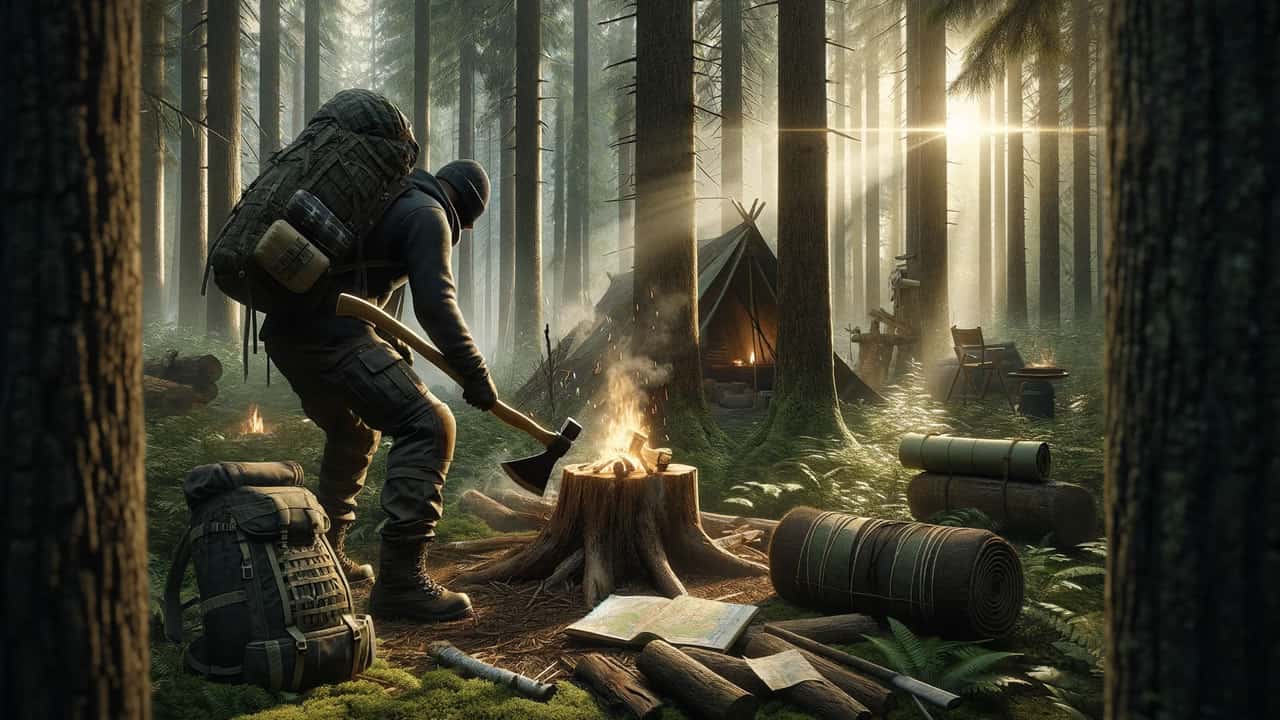
In the realm of wilderness survival skills, an axe is one of the most versatile tools you can have at your disposal. Its uses extend far beyond just chopping wood; it can be a critical survival tool for building shelter, procuring food, and ensuring safety. In this comprehensive guide, we’ll explore how to use an axe in various wilderness survival scenarios, ensuring you’re well-prepared for your next outdoor adventure.
An axe in a survival situation is not just a tool but a lifeline. It serves multiple purposes – from constructing shelters and processing firewood to clearing paths and, in some cases, self-defense.
Before delving into techniques, it’s crucial to choose the right axe. In survival scenarios, a versatile, durable, and portable axe is ideal. A hatchet or a small forest axe, known for their manageable size and weight, are excellent choices.
Survival situations demand caution. Before using an axe, ensure you understand basic safety:
One of the primary uses of an axe in the wilderness is shelter building. Here’s how you can use an axe to construct a basic shelter:
In a survival situation, fire is essential for warmth, cooking, and signaling for help.
While an axe is not primarily a hunting tool, it can aid in foraging and preparing game.
An axe can be used to fashion various tools and utensils from wood.
In dense wilderness, an axe is invaluable for clearing paths or creating navigational markers.
In a rescue scenario, an axe can be used to signal for help.
Maintaining your axe is crucial for it to function effectively:
While not ideal, in extreme situations, an axe can be used for medical purposes.
An axe is an invaluable tool in wilderness survival scenarios. It offers versatility in a range of situations from shelter building to fire making, and even in emergency situations. The key to utilizing an axe effectively in the wild lies in choosing the right tool, practicing safety, and honing your skills before you find yourself in a survival situation. Remember, your survival may depend not just on having an axe but on knowing how to use it effectively and responsibly. Stay prepared, stay safe, and respect the wilderness and your tools.
Axes are tools that have been a vital part of human civilization for thousands of years. Whether used for chopping…
Axes have long held a place in our collective imagination, symbolizing strength, survival, and sometimes even terror. From ancient legends…
Bushcraft axes are a fundamental tool for survival and outdoor enthusiasts. These axes are not just tools for wood chopping…
Chopping wood is a fundamental skill, whether for a seasoned lumberjack, a homeowner managing their firewood supply, or an outdoor…
For anyone involved in wood cutting, whether as a professional or a hobbyist, choosing the right axe is crucial. Axes…
Felling axes have been a vital tool for woodsmen, outdoors enthusiasts, and survivalists for centuries. These axes are specifically designed…